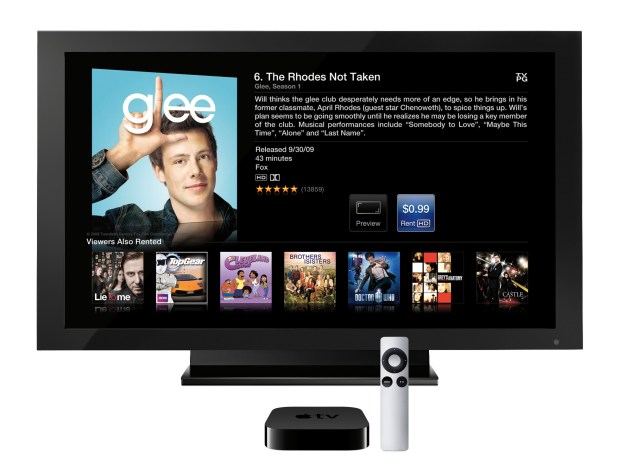
Market research firm Strategy Analytics has issued a new report that claims Apple has captured yet another market: TV set-top boxes. Strategy Analytics expects the market for TV set-top boxes to reach 12 million units this year, with Apple accounting for nearly one third of the market, or about 4 million units. The report also finds that Apple TV owners spend more money on movies and TV shows—although the numbers are surprisingly low for a device that was essentially envisioned as a gateway to Apple’s iTunes store.
“Apple is leading this nascent market, which it still considers a ‘hobby,'” said Strategy Analytics senior analyst Jia Wu, in a statement.
Overall, Strategy Analytics finds that some eight percent of U.S. households have a TV set-top box that brings in streaming or Internet-based content—that number is slightly higher than in Europe, where the figure was seven percent. Strategy Analytics attributes quickly adoption of the devices to lower price points set by the Apple TV and Roku—the second-generation Apple TV is $99, while Roku boxes start at just $49.99.
The report finds that 30 percent of Apple TV owners rented movies or TV shows through the device, compared to just 20 percent of users of other set-top box and streaming devices. The figure is surprising, given that the Apple TV was primarily envisioned as a way for users to tap into content from the iTunes store from a television rather than from a computer or other device. The percentages suggest the most popular feature of the Apple TV is not its access to the iTunes store, but rather its Netflix client and the ability to bring in content from around the home network via AirPlay.
Apple has famously described the Apple TV as a “hobby,” and despite an exciting second-generation refresh a year ago that brought the unit’s price down to $99, has largely consigned the product to long periods of neglect as Apple focuses on other businesses. However, the apparent success of the Apple TV may bode well for the much-rumored Apple TV, fueled by Steve Jobs telling biographer Walter Isaacson that he had finally “cracked” the problem of providing a fully integrated television experience.
Editors' Recommendations
- What we want to see from the next Apple TV 4K
- Let’s discuss an Apple TV 4K with a camera
- Best Apple TV deals: Save on the Apple TV 4K and more
- Hands-on with the Belkin iPhone Mount with MagSafe for Apple TV 4K
- Belkin drops a $50 mount for iPhone video calls on Apple TV 4K


